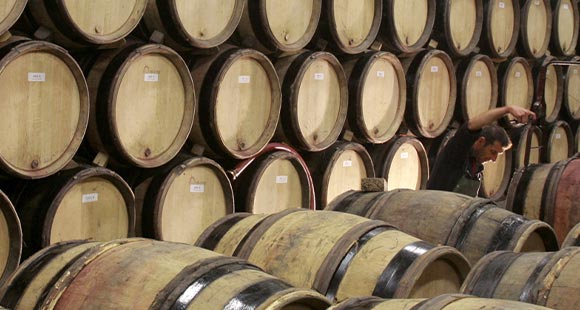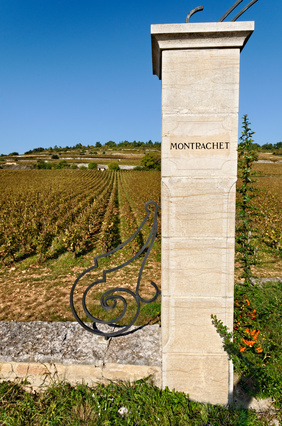
Consumer trends couldn’t be further from the guiding principles of Burgundy’s Domaine Ponsot. Unlike many estates, though, what they reject is not intervention – as we see in the vein of natural and organic wines – but rather instant gratification. Good wine takes time. And these ones are worth the wait.
Family values
Since it was purchased by William Ponsot in 1872, the estate has never left the family’s hands. It originally comprised two parcels in Morey-Saint-Denis – Clos des Monts-Luisants and Clos de la Roche – before successive owners each enriched Ponsot’s legacy with their own developments. William’s nephew, Hippolyte, was next to take up the domain, and he was one of the first Burgundian vintners to bottle all of his wine at the property in 1932, thus marking his place as a regional pioneer. Following close in Hippolyte’s footsteps was his son, Jean-Marie, who brought something different to the table. He found that what Ponsot needed was to hone its grape varieties, thus he became a true specialist in clonal selection. This meant choosing strains that best suit the terroir with the view to producing regular yields of consistent quality. In short, a worthwhile investment of time, talent, and effort, since the 1960s project still serves the estate to this day; some of the best Pinot Noir clones trace their heritage back to the Clos de la Roche vineyard. By the end of the 1990s, it turned to sibling duo Laurent and Rose-Marie to take the estate international, expanding Ponsot’s renown to reach around the globe.
And throughout all of this, the vineyard has been constantly extended. Ponsot now cultivates vines covering eight hectares of land, seven of which are planted with Pinot Noir, and one with Aligoté.
Ponsot’s philosophy
If Domaine Ponsot is run in a way that mirrors the production methods of organics and biodynamics, the estate rejects the idea of following trends, or being part of a particular phenomenon. They’ve always been improving the way they make their wine, treating the vines with respect before there was a label for this and accepting that a certain amount of desire to intervene is only human. Getting to know the vineyards, their soil, their qualities and their potential involves both common agricultural sense and helpful technology. The efforts of generations past have built the estate up to where it stands today, cultivating grapes and vinifying them with a strong sense of self. They see no need for certification, the Ponsot philosophy considered more than strong enough as a foundation for their work. The proof is in the cuvées.
Their eight hectares of vines stretch across the Côte de Nuits, including spots in the famous Gevrey-Chambertin, Morey-Saint-Denis, and Chambolle-Musigny, as well as in the Côte de Beaune with Corton Charlemagne, Corton Bourdon, and Saint-Romain. No less than six of the domain’s parcels are classed under the prestigious Grand Cru label. Impossible to deny that this is an impressive line-up of coveted crus, but Domaine Ponsot isn’t one to rest on its laurels, and they know what counts most: their relationship with the vines.
The growing year is spent meticulously working on their precious Pinot Noir and Aligoté plants, which are then harvested by hand relatively late compared to their neighbours. The grapes are collected in wicker baskets, to give you an idea of the respect afforded them. On their way to the winery, the bunches travel in containers of 17 kilos at most, allowing the fruit to be better preserved. Sorting takes place in both the vineyard and the winery; this way, only the best grapes make it into the wine. Some of the bunches are destemmed, others not, and this depends on the cuvée being made; in any case, the fruit holds onto its quality by arriving intact.
Vine to glass
In the words of the domain, ‘we have only one rule: there are no rules!’ When it comes to vinifying their grapes, the methods used depend on the quality of each harvest, meaning that each Ponsot vintage is a tailor-made cuvée. Not sticking too rigidly to one process opens up the possibility of making each year a great one, an approach that requires a lot of skill! As already mentioned, the bunches are destemmed (or not) to varying degrees, then there is punching down, and pressing that sometimes extends to several sessions. Following regional tradition, the grapes macerate and ferment in conical oak vats, with maceration taking between 10 and 20 days. The wine is then matured in oak barrels for two years; the oak is never new, as this is seen to excessively influence the taste of the wine. As for talk of ‘natural’ processes, sulphur is added quite rarely and in small doses. However, the team at Ponsot accepts that SO2 has its place in difficult circumstances, using the chemical to ‘treat’ the wine when necessary. This kind of flexibility is arguably becoming rarer in an industry where certain producers will risk an entire vintage for the sake of their stringent principles. Domaine Ponsot’s reasonable sense of balance may not make the headlines, but it does make for some excellent produce.
Charming, deep, and lively wines
La Revue du vin de France has highlighted how the wines from Domaine Ponsot express ‘total respect for the identity of their soils’. Overall, the character of these cuvées can be described as deep and charming with a ripeness to them. The estate has explained that patience is needed, as the wines ‘only show themselves after a long and ungrateful adolescence, revealing a sensual and elegant being when they reach maturity’. It is key for each one to reflect the terroir it comes from, otherwise the estate chooses to declass or even distill it, as was the case for the 1993 Morey Clos des Monts Luisants. You can be sure that the bottle you uncork has been fully approved by its impassioned vintners, keeping in mind their conviction that ‘we love [wine] because it’s alive’.
You’ll find our whole selection of wines from Domaine Ponsot here



